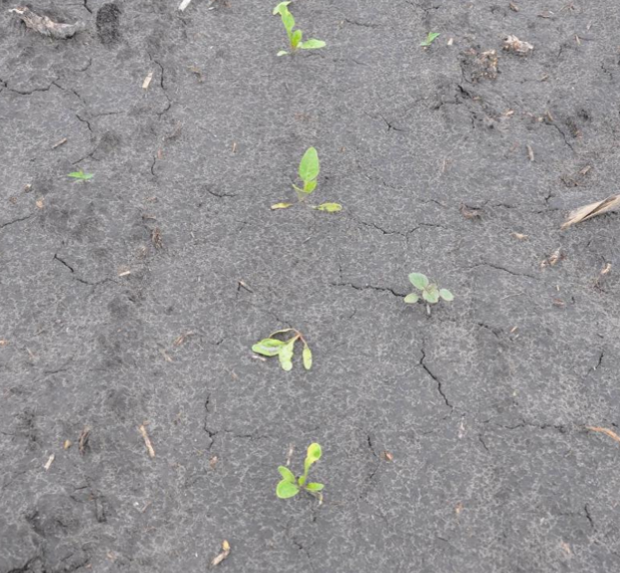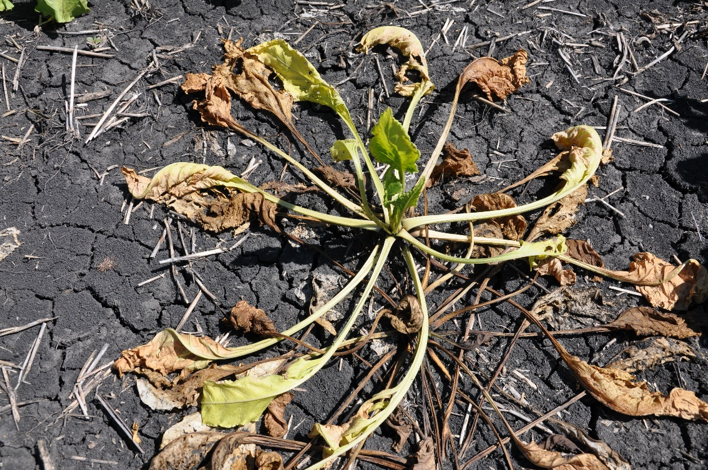Managing of Rhizoctonia Damping-Off, 甜菜的冠腐病和根腐病
This page was adapted from the article, 根瘤菌抑制的管理, 甜菜的冠腐病和根腐病," which appeared in Crop & Pest Report on June 16, 2022.
Rhizoctonia solani causes Rhizoctonia damping-off and root rot diseases of sugarbeet. These diseases are soil borne and once present in a field can be a problem for many years. Damping-off results in death of seedlings especially when soil temperature and moisture are high at planting. Crown rot typically results in death of plants and root rot may also result in death or significant reduction in root yield of unthrifty plants. Crown rot occurs when infected soil gets into the crown of plants after a heavy rainfall event or through cultivation. Infection of roots occur when soil temperature becomes favorable (>62⁰F) but symptoms are not observed until the plants ability to absorb moisture and nutrients become comprised resulting in wilting. Growers at some cooperatives have to destroy fields with more than 50% incidence of Rhizoctonia root rot since infected roots do not store well in long term storage. 与非寄主作物轮作, 使用抗性品种, 提前播种到阴凉的土壤中, and fungicides used as seed treatments or targeting the soil near the roots that get in contact with the pathogen when applied foliarly are strategies used to manage the disease.
In infected seedlings, there is wilting followed by death because of infection of the hypocotyl at the soil line (Figure 1).

In older plants, the most common symptom is wilting of the leaves, starting with the oldest leaves (Figure 2).

叶子可能变黄,也可能不变黄. Severely infected plants typically become desiccated and withered before harvest (Figure 3).

Some infected plants may survive but damaged roots will be of lower quality. Root rot symptoms are easily observed on infected plants at or just below the soil line (Figure 4), and sometimes lower on the tap root (Figure 5).


Rotations with crops, such as wheat and barley, which are not host of R. solani AG 2-2 IIIB or AG 2-2 IV, will help to reduce the amount of inoculum in the soil. Since the pathogen is more severe in wet conditions, draining and leveling of fields with help in disease management. Fields with a history of Rhizoctonia crown and root rot should be planted to a variety with good disease resistance. The fungicides azoxystrobin (Quadris or AZteroid) or Priaxor at labeled rates, applied in a 7-inch band before infection takes place provide effective disease control. It is best to apply fungicides when plants are at the 4-6 leaf stage and before they close rows so that the fungicide gets into the soil and close to the roots to prevent infection. Timing application just before a rain event, or before a scheduled irrigation where this is available, will help to get the fungicide in a position to protect the roots.